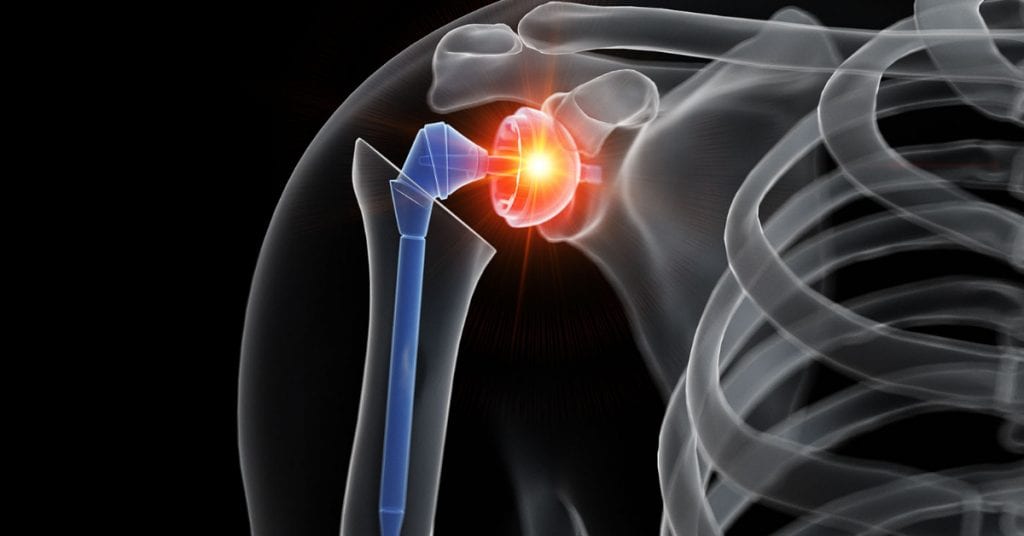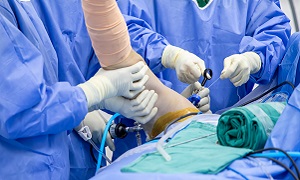Cost of Shoulder Arthroscopy in India
| Treatment | Cost | Days in hospital | Days outside hospital | Total stay in India |
|---|---|---|---|---|
| Shoulder Arthroscopy | USD 2700 | 3 | 6 | 9 |
Shoulder Arthroscopy
Shoulder arthroscopy is a surgical procedure that uses a small camera known as an arthroscope. This camera helps to examine or repair the tissues inside or around the shoulder joint. The arthroscope is inserted through a small incision in your skin.
Since the arthroscope and the surgical instruments are quite thin, this makes the surgery possible through the use of small incisions, rather than the use of larger incisions which were needed for standard, open surgery. This results in lesser pain for patients and it also shortens the recovery time and return to regular activities. This technique has been performed since the 1970s and it has made the diagnosis, treatment, and recovery from surgery faster and easier.
Purpose
The procedure can be performed for multiple reasons:
- A torn or damaged cartilage ring or ligaments
- A torn or damaged biceps tendon
- A torn rotator cuff
- Shoulder instability, in which the shoulder joint becomes loose and slides around too much or becomes dislocated
- A bone spur or inflammation around the rotator cuff
- Inflammation or damaged lining of the joint, often caused by an ailment such as rheumatoid arthritis
- Loose tissue that needs to be removed
- Shoulder impingement syndrome, to make more room for the shoulder to move around
- Arthritis of the end of the clavicle
Preparation
Before your procedure, let your doctor know about what kind of medications you might be taking. This can include supplements or herbs.
For two weeks before the procedure, it is likely that you will need to stop taking blood thinners. If you are suffering from heart disease, diabetes, or any such medical conditions, then your surgeon might want to see the doctor treating you for these conditions.
If you drink too much alcohol, inform your surgeon. If you smoke, it is important to stop at least two weeks before the procedure. Smoking can interfere with wound and bone healing.
If you get the flu, fever, herpes, or any other illness, before the surgery, you need to inform your doctor before the surgery.
On the day of the surgery, you might be asked to fast for around eight hours before the surgery. Make sure that you arrive at the hospital or surgery center on time. You might also receive a few medications which you are to take with a little water.
Procedure
Once you are in the operating room, you are going to be positioned so that your surgeon is able to easily adjust the arthroscope, for having a clear view of the inside of the shoulder. You might be positioned in a beach-chair position, or may be asked to lie on your side. Each position has its own advantage. Your surgeon will select the position based on their training as well as the procedure.
After being positioned, your surgical team will be removing any hair if required. An antiseptic solution might next be spread to clean the skin. Your forearm might also be kept in a holding device to ensure that it stays still.
Next, your surgeon might inject fluid into the shoulder in order to inflate the joint. This will make it easier for him/her to see the structures of your shoulder through the arthroscope. Next, your surgeon will be making a tiny puncture in your shoulder, which is going to be around the size of a buttonhole, for inserting the arthroscope. The fluid will flow through the arthroscope so that the view remains clear and any bleeding is controlled. Images from the arthroscope are then projected on the video screen, and they will show the surgeon the inside of your shoulder as well as any damage.
Once your surgeon is able to identify the problem, other small instruments will be inserted through separate incisions for treating it. In most cases, special devices are used for anchoring stitches into bone. Any damaged tissues will be repaired.
After the surgeon performs all necessary repairs, the incisions will be closed with stitches and will be covered with a dressing. Generally, most surgeons take pictures from the video monitor during the procedure to show you their findings and the repairs that were made.
In some cases, open surgery might be required if the surgeon sees that there is a lot of damage. If open surgery is performed, you will have a large incision, so that your surgeon is able to operate directly on your bones and tissues.
Recovery
After you are discharged from the hospital, make sure you follow your doctor’s instructions for self-care.
Complete recovery can take between 1 to 6 months. You might need to wear a sling for the first week. If a lot of repairs were done, you might need to wear them even longer.
You can also take pain medications if you experience a lot of pain.
You can choose to undergo physical therapy as these will help you regain motion and strength in your shoulder. The length of the therapy can vary, depending on the procedure that was performed.
Since all patients have different health conditions, recovery time varies for every patient. If you had a minor repair, then you might need a sling, and your strength should return after a short period of time.
Risks
Few risks that are associated with this procedure include:
- Shoulder stiffness
- The repair failing to heal
- Failure of the surgery to relieve symptoms
- The weakness of the shoulder
- Damage to the cartilage of the shoulder
- Blood vessel or nerve injury
- Allergic reaction to anaesthesia
- Breathing problems
- Blood clots or infection




